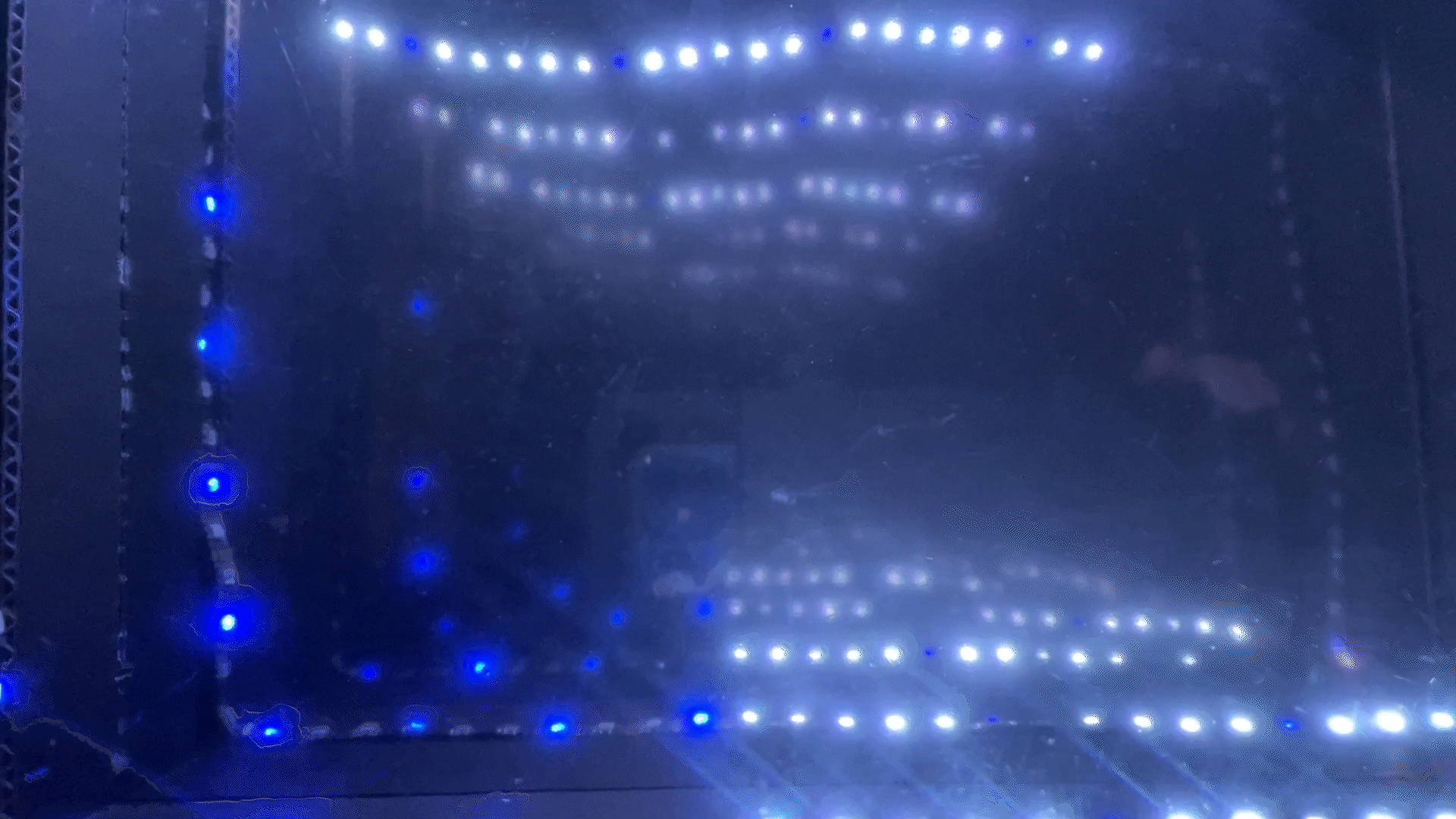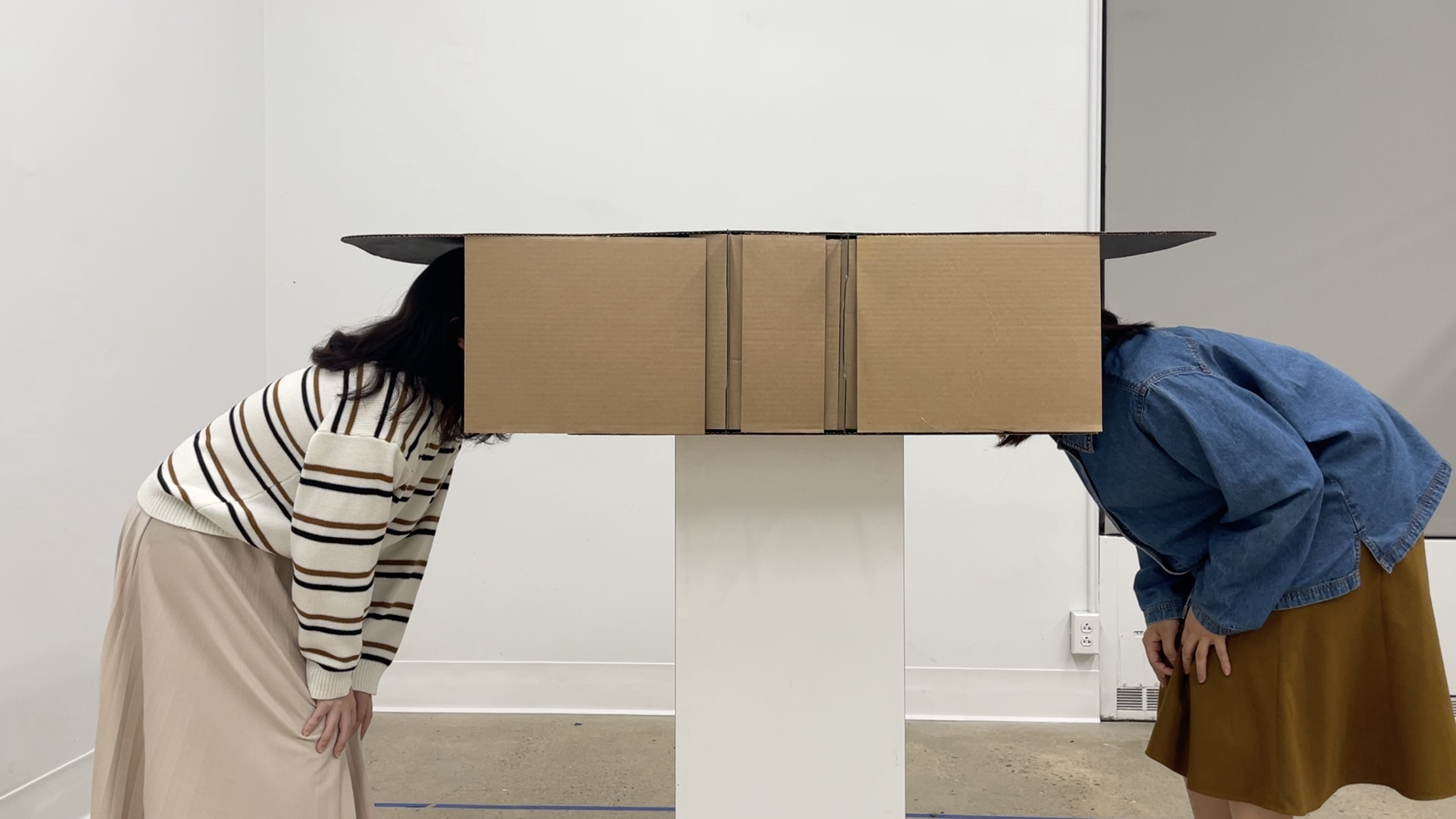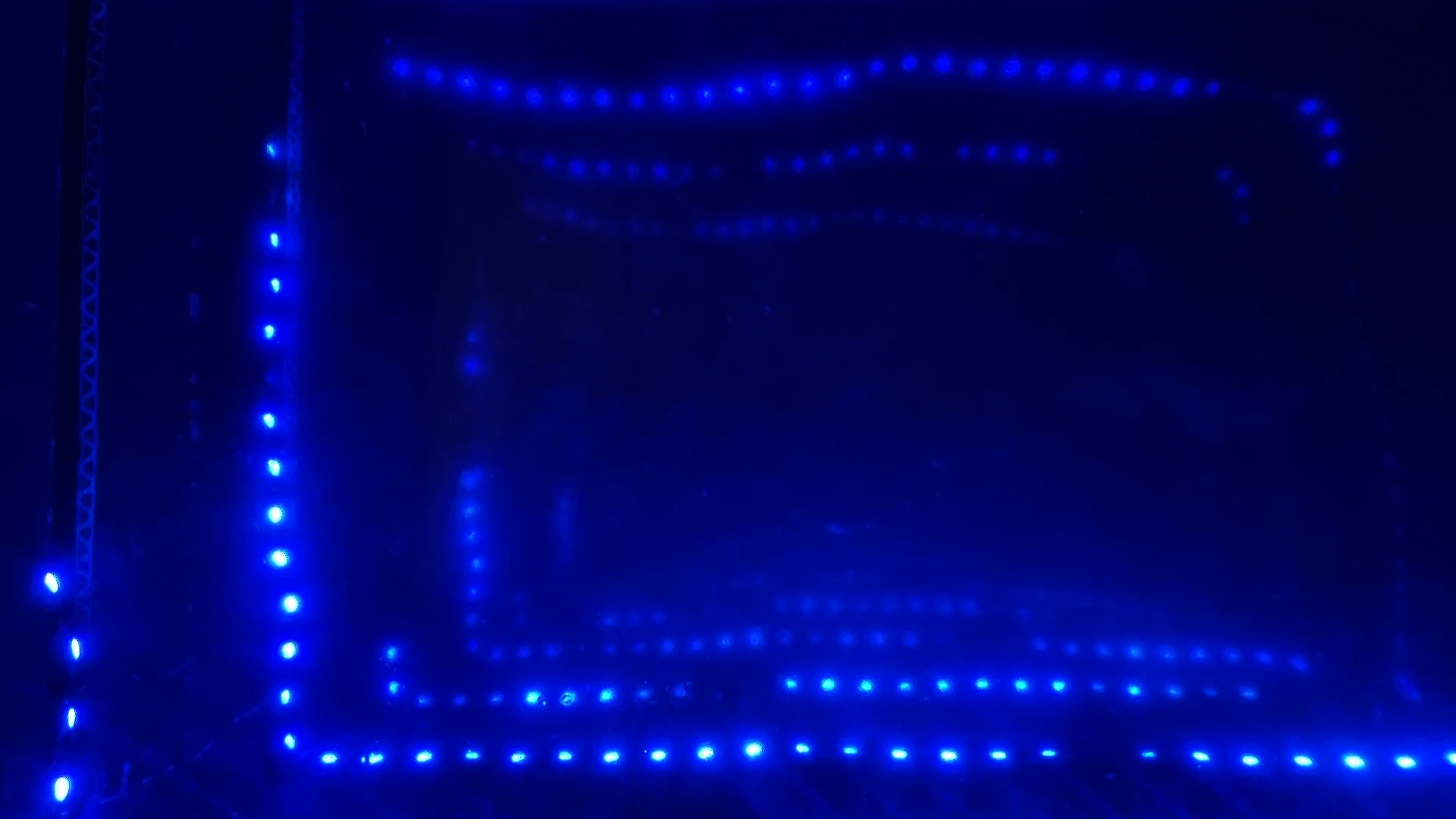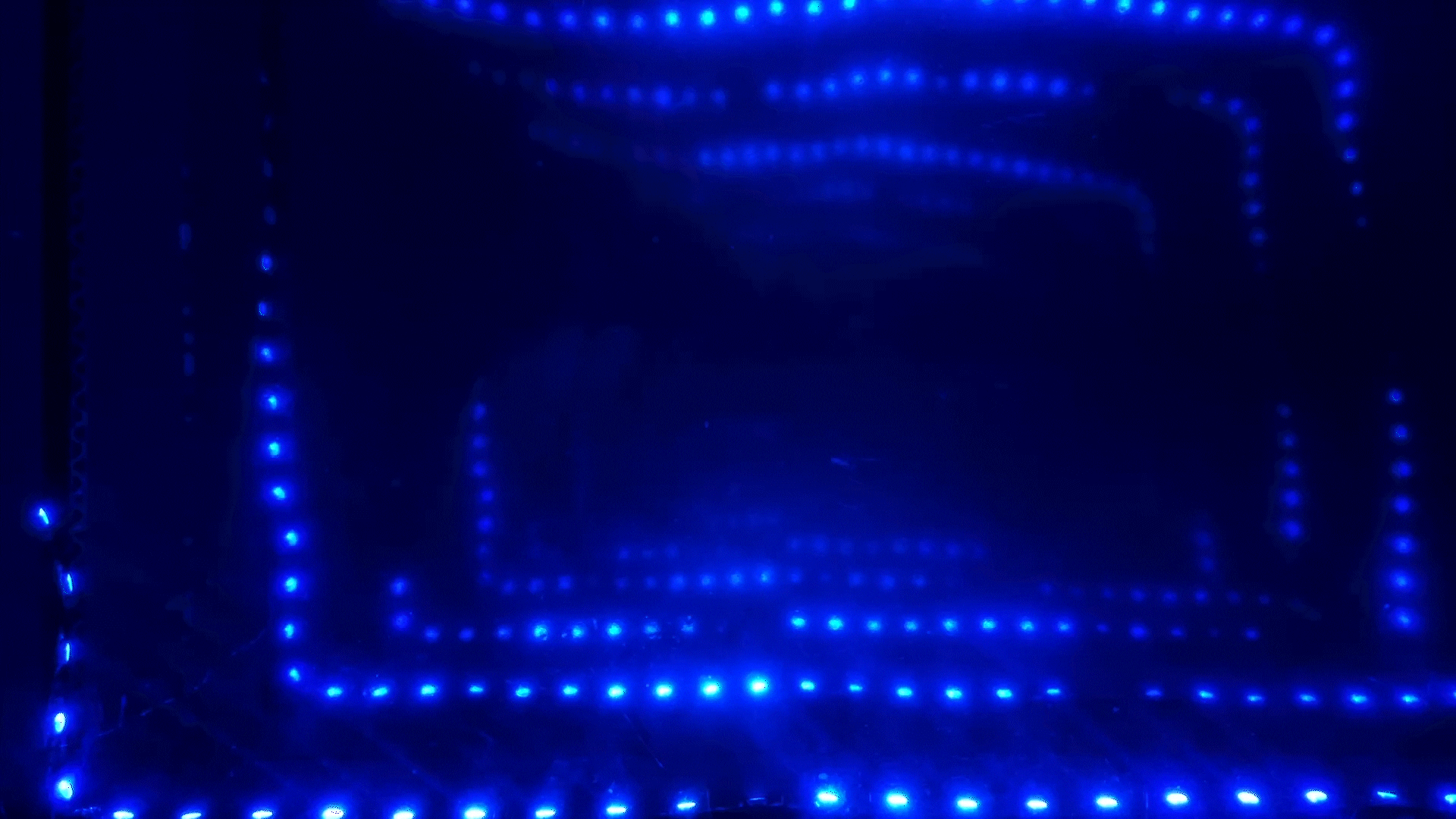
Interaction Design, Creative Technology
Dance of the Lights
The more you try to understand, and the more you touch the installation, the more distorted the your view becomes. Push past the boundaries of the physical world with Dance of the Light, an interactive light and sound installation stretching into oblivion.
Inspired By
Ahn Chul Hyun
Role
Interaction Design and
Creative Technologist
Duration
7 Weeks
Tools
Arduino, Low-Fi Prototyping, User Research, WLED Library
Overview
Augmenting our Senses
When our brains are confused we seek trust in the familiar things to override the anxiety of the unfamiliar. Seeking to challenge our senses, Dance of the Lights is a deceptively short box seemingly containing the whole universe within. Paired with Hans Zimmer's score "Cornfield Chase" viewers are taken through the cosmos through this celebration of sight and sound.
My Role
From Design to Implementation
As the designer and technologist on this project, there was more control I could exert over the direction of the project, and also a lot more questions I had to consider when making the project. I also had to consider what the one person experiences, versus the two person, and what it would look like when no one is experiencing it.
Sonic Serenity (Sound up!)
The link between sight and sound is long documented. Movies and other film media speak to this powerful connection, with music scores accompanying powerful moments on screen. If I wanted to distort one’s sense of reality, I first needed to establish that reality. The demo below is a demo of the individual experience of sight and sound working in tandem to create a visual symphony to Hans Zimmer’s “Cornfield Chase".”
Interaction Demo
Two-Person Experience
Designing Use Cases: Low-Fi Prototyping
Default State
A slow constant hum to draw passerbys in
Two-Person Experience
Distorted Perceptions
In addition to introducing multiple colors of lights to the experience, the two person experience allows for the person to be able to adjust the angle of the mirrors, and thus distorting their perception of the reality previously created. However, the more they try to play with the mirrors, the more confusing it would become because both are moving at the same time.
One-Person State
A quicker movement synched up to the musical score of choice
Interaction Design
Designing for Multiple Experiences
As experiences move off the screen and into the physical environment they have the opportunity to become shared experiences. If they then become shared experiences, how does your experience cater to each person individually, and also evolve as more people join in? These questions were the main driving factor behind the creation of Dance of the Lights.
Two-Person State
Multiple lights now appear in synch with the musical score
Final Reflections
Acknowledgements
Prototyping as a way of thinking
I’ve struggled with physical form making in the past, and I really dislike waste, so I try to sketch a lot beforehand to figure out everything about the final physical form before I make anything. The tricky thing about this project was that there were a lot more unknowns than I expected, and I needed to make things to be able to understand them. This time I needed to understand what the minimum viable product is for testing my understanding, and using it to further my ideation process.
Always keep a copy of your work (Back it up!)
A week before the project was due the WLED library crashed, and I lost all the lighting animation I’ve been creating. I lost so much work in the span of minutes, and the worst part was that I couldn’t even figure out why. After that everytime I reached a “checkpoint” (ie making a change big enough for me to feel the need to commit) I took a photo of it. It sucked losing all my work the first time, but at the very least the second time it happened I was prepared.
There are always tools
I was really worried about how I could prototype the LEDs for this project, after a good few days of trying I figured there must be a better way. Several Google rabbit holes and a chance encounter on Reddit later, I stumbled upon the WLED library.
To the people who have helped
I want to give all my gratitude to Haeyoung. This project was the first research driven project I’ve taken on, and I’m grateful for her nudging me to think across research, sketching, and the physical form. Thank you to Luca for giving me insights and feedback throughout my ideation process. Thank you to Aarnav for helping me with soldering and connecting all the LEDs together, you made the process a lot easier.




